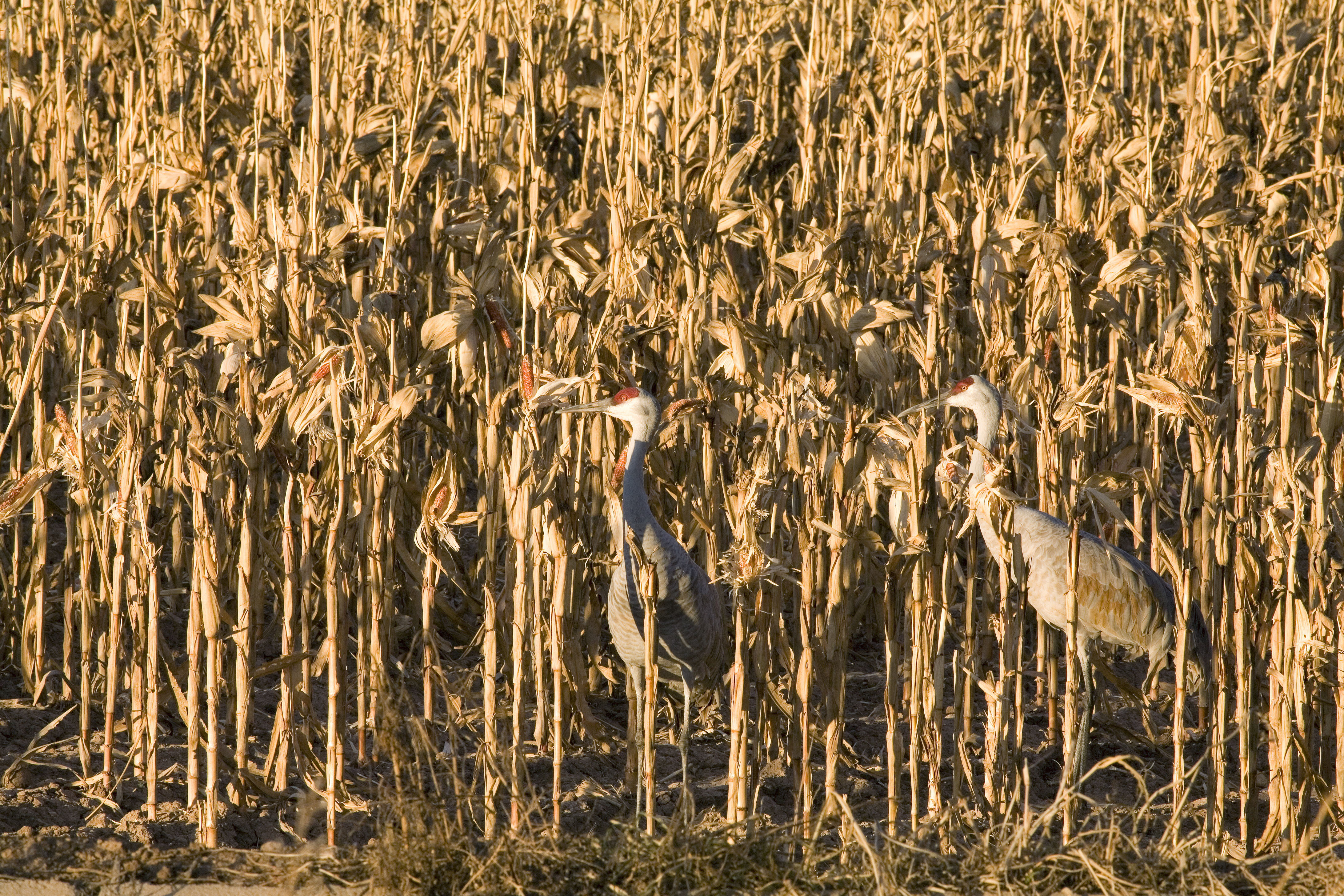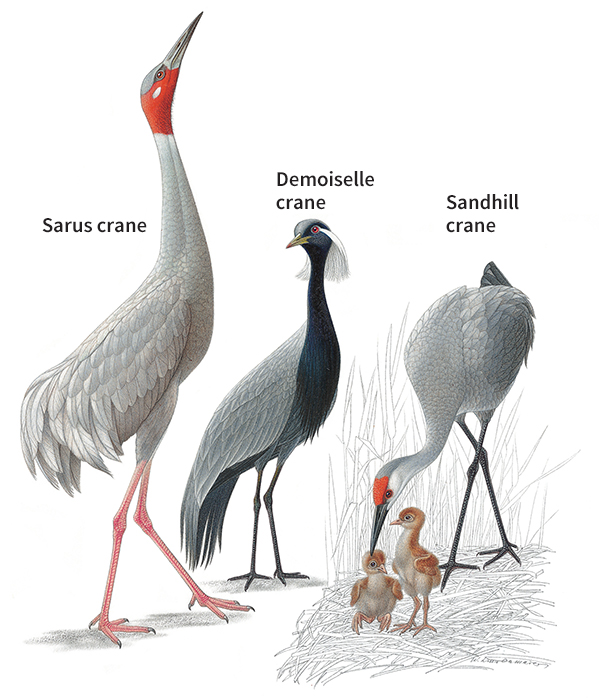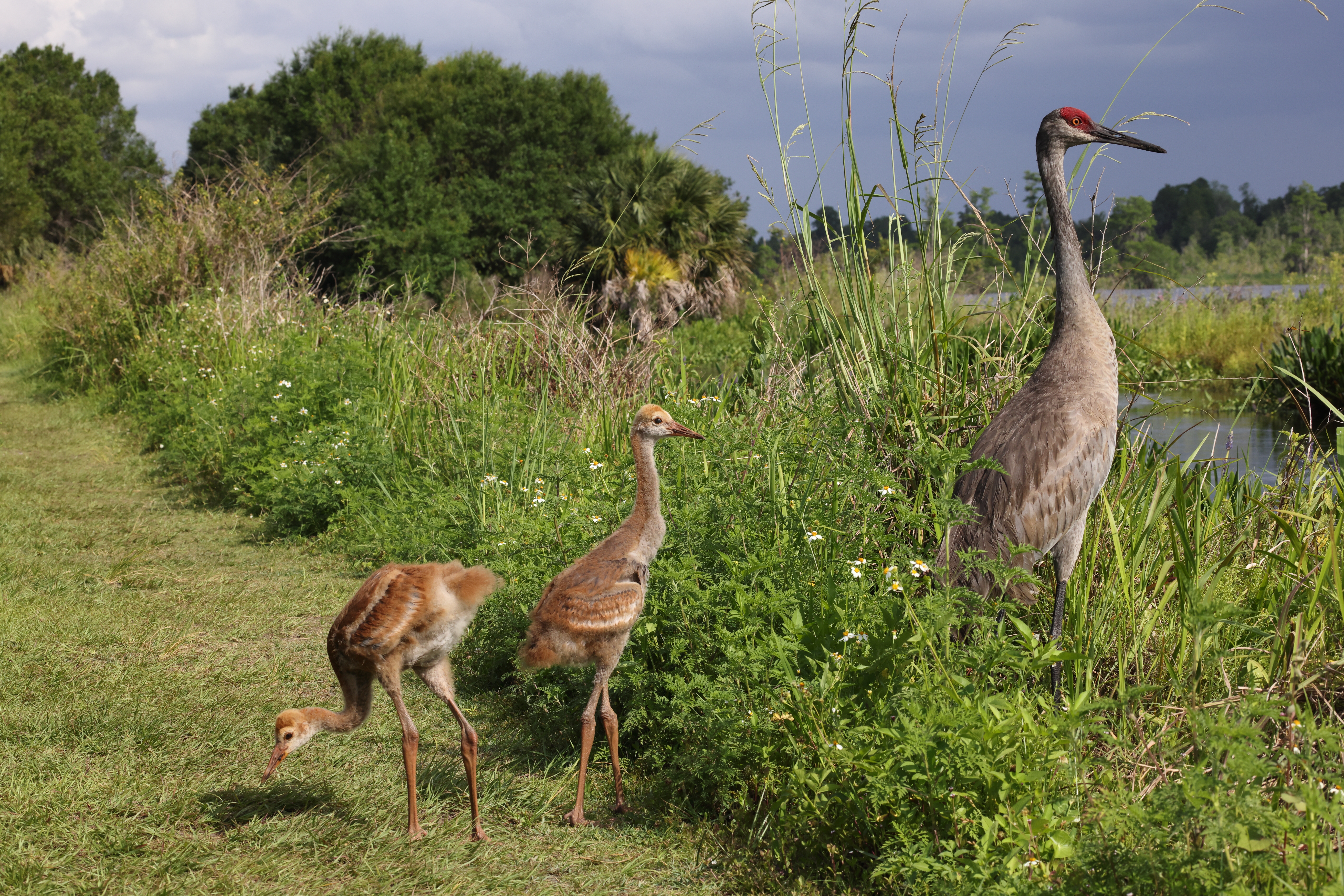Crane is the name of a family of large birds with long legs and a long neck. Cranes live in marshy areas in many parts of the world. South America and Antarctica are the only continents with no cranes. Cranes resemble herons, but the two birds can be distinguished in flight. Cranes extend their head and neck straight ahead when they fly, but herons bend theirs into an S-shape.
Loading the player...Whooping crane
Appearance.
Cranes have long and slender legs, necks, and bills. The tallest cranes stand about 5 feet (1.5 meters) high, and the shortest are about 21/2 feet (0.8 meter) tall. A crane’s wingspan can measure up to 71/2 feet (2.3 meters). The male and female look alike. They range in color from white to dark gray and brown. Most adult cranes have a patch of red skin on the head.

Habits.
Most cranes that live in the Northern Hemisphere migrate south each fall from nesting grounds in the north. They return to their nesting ground each spring. Other cranes remain the year around in warm areas. A crane’s powerful, buglelike voice carries for a great distance. The birds call to each other in flight, perhaps to keep the flock together during migration.

Cranes mate after they reach their nesting grounds. The male and female perform a dance before mating. The birds alternately circle around each other with opened wings, bow their heads, and leap into the air.
Cranes build nests in shallow water in a marsh, swamp, or other wet, open area. Both the male and the female help pile grasses, weeds, and other plants into a mound. A female crane usually lays only two eggs in a season. Both parents care for the eggs and young.
Cranes eat a variety of foods, including frogs, insects, snails, and grain and other plants. They are a pest in some areas because they take grain from farmers’ fields.
Kinds.
There are 15 species of cranes. Only two species are native to North America—the rare whooping crane and the more common sandhill crane.
Whooping cranes, or whoopers, once nested on the prairies of the United States and Canada. They declined significantly from the mid-1800’s to the early 1900’s as settlers hunted them and disturbed their habitat. By the winter of 1941-1942, only 21 or 22 birds remained. Laws now protect whoopers and their habitat. Scientists are breeding whoopers in captivity and have established more flocks in the wild. Such activities have increased the number of living whooping cranes. But these birds remain among the rarest animals in North America. See Whooping crane.
Sandhill cranes nest in northern Russia, Canada, and the northern United States, as well as in Florida, Georgia, Mississippi, and Cuba. Only the sandhill cranes that nest in the north migrate. They winter mostly in Texas, New Mexico, and Mexico. Migrating sandhill cranes travel in enormous flocks, which may include more than 100,000 birds.

Sandhill crane
More species of cranes live in Africa, Asia, and Europe than in North America. Africa’s elegant crowned cranes have an ornamental tuft that resembles a shaving brush on top of their head. The sarus cranes of southern Asia are prized by Hindus, who believe that seeing a pair of these birds brings good luck. The common crane is a familiar bird throughout the northern parts of Asia and Europe.
Loading the player...
Demoiselle crane

Several species of cranes have become rare because marshes in many areas have been drained for farming and for settlements. Destruction of their breeding ground is the chief threat to these cranes’ survival.
